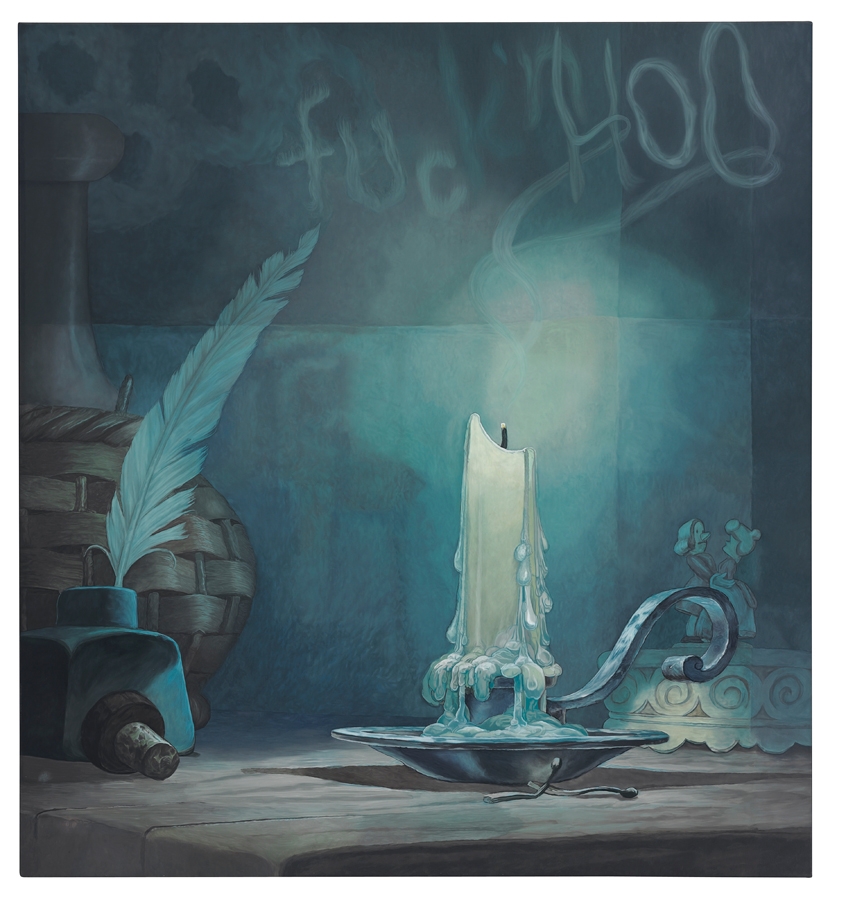Not so long ago, deeming a work of art ‘derivative’ meant it was unoriginal, that its moves were too easily recognised in other, more significant work, often by older, more established artists. It was an easy putdown, and a defensive one too. Dissing something as ‘derivative’ was rarely followed by the question, ‘Of what?’ If you had to ask, then you were exposing your own lack of knowledge of the field. Best to nod the head and offer your coerced consent: ‘Yes, totally derivative, you’re so right.’
Lately, though, a different sense of ‘derivative’ has been making the rounds in contemporary art discourse. Mainstreamed by the financial crisis of 2008, when another kind of derivative, the collateralised debt obligation backed by subprime mortgages, brought capitalism to its knees, this financial sense of the term has been popping up recently in commentary on the contemporary art market, which has been rewarding a small number of artists and estates with incredible amounts of money for work that appears to have no other significant qualities than its being highly desirable for the very, very wealthy.
For example, in an essay that appeared in the May issue of The Brooklyn Rail (full disclosure: I am the editor of the series in which this essay appeared), David Geers writes, ‘Though such investment in art as an asset is nothing new, the aesthetically blinkered mentality of this recent trend [in flipping art] is conspicuous in its parallel to the trading of derivatives and other financial instruments that traffic in side-bets rather than the productive capacity of companies or the abstracted labor power congealed in the traditional commodity form.’
Steven Shaviro, in ‘Accelerationist Aesthetics’, published in the June 2013 edition of e-flux journal, wrote that ‘finance operates according to a transgressive cultural logic of manic innovation, and ever-ramifying metalevels of self-referential abstraction. This easily reaches the point where financial derivatives, for instance, float in a hyperspace of pure contingency, free of indexical relation to any “underlying” whatsoever.’ And as Suhail Malik, perhaps the commentator most committed to the analogy between contemporary art and financial markets, writes in the last issue of Texte zur Kunst: ‘Art prices are set only in terms of the market, the market price being an always tactical markup indexing a hybrid of capital and power accumulation liberated from production, consumption, use, etcetera’, and that the market most ‘instructive’ to compare this one to is the one for ‘financial derivatives’.
So ‘liberated’ from categories of talent, taste, skill, history, \ninnovation or critique, the work of art ‘floats free’ in an unregulated \nsea of differential value whose prices can inflate, bubble and pop \naccording to their own autonomous dynamics
What these and other commentators are concerned to address is the apparent divorce between the ‘underlying’ intrinsic qualities that a work of art may be said to possess and the value it is accorded at some ‘higher’ level of abstraction by the social, political and economic networks in which it is caught up. So ‘liberated’ from categories of talent, taste, skill, history, innovation or critique, the work of art ‘floats free’ in an unregulated sea of differential value whose prices can inflate, bubble and pop according to their own autonomous dynamics.
The question, then, is what is to be done? The underlying assumption of such comparisons is that derivatives markets, especially since 2008, are the specific roots of a general kind of evil called ‘finance’, and the more that contemporary art can be shown to be like derivatives, and the more the market for contemporary art can be made to look like derivatives markets, the more we might become fed up with the situation and demand something different from the ‘system’, or a different system entirely.
But dismissing art by demonising ‘derivatives’, or rather, demonising contemporary art by claiming, as Malik does, that it ‘is a transmission mechanism for the speculative pricing of everything, for universal financialization’, is at once nihilistic and aggrandising. Derivatives are meant to mitigate uncertainty through the modelling of risk. They can do this well; just think of a basic futures contract. Yes, when left unregulated and fed back into the financial system, they can generate greater uncertainty and augment risk to a perilous degree, as we witnessed in the last financial crisis. But finance, like capitalism itself, can do good as much as bad. The key is getting the incentives right, which means thinking hard about value, what it is and how it is meant to guide us and others.
In contemporary art today, by contrast, there is both very little risk and very little thought given to the hard question of value. It is much easier to assert that price has crowded everything else out and be done with it. If we don’t address ourselves to the problem of value, then we are sure to end up with little else but derivatives.
This article was first published in the Summer 2014 issue
